
Field Marshal FitzRoy James Henry Somerset, 1st Baron Raglan,, known before 1852 as Lord FitzRoy Somerset, was a British Army officer. When a junior officer, he served in the Peninsular War and the Waterloo campaign, latterly as military secretary to the Duke of Wellington. He also took part in politics as Tory Member of Parliament for Truro, before becoming Master-General of the Ordnance.
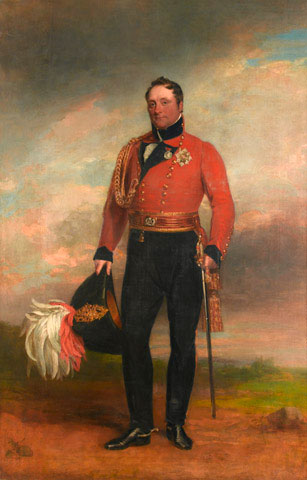
General Rowland Hill, 1st Viscount Hill, was a British Army officer who served in the Napoleonic Wars as a brigade, division and corps commander. He became Commander-in-Chief of the British Army in 1828.
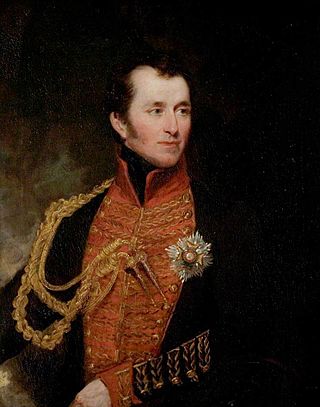
General Sir William Henry Clinton was a British general during the French Revolutionary and Napoleonic Wars as well as the First Miguelist War. He was also the grandson of Admiral George Clinton and elder brother of Lieutenant General Sir Henry Clinton.

Sir George Nugent, 1st Baronet, GCB was a British Army officer. After serving as a junior officer in the American Revolutionary War, he fought with the Coldstream Guards under the Duke of York during the Flanders Campaign. He then commanded the Buckinghamshire Volunteers in the actions of St. Andria and Thuyl on the river Waal and participated in the disastrous retreat from the Rhine. He went on to be commander of the northern district of Ireland, in which post he played an important part in placating the people of Belfast during the Irish Rebellion, and then became Adjutant-General in Ireland. He went on to be Governor of Jamaica, commander of the Western District in England, commander of the Kent District in England and finally Commander-in-Chief, India.

Field Marshal Sir John Fox Burgoyne, 1st Baronet, was a British Army officer. After taking part in the Siege of Malta during the French Revolutionary Wars, he saw action under Sir John Moore and then under the Duke of Wellington in numerous battles of the Peninsular War, including the Siege of Badajoz and the Battle of Vitoria. He served under Sir Edward Pakenham as chief engineer during the War of 1812. He went on to act as official advisor to Lord Raglan during the Crimean War advocating the Bay of Kalamita as the point of disembarkation for allied forces and recommending a Siege of Sevastopol from the south side rather than a coup de main, so consigning the allied forces to a winter in the field in 1854.

Sir Thomas Fowell Buxton, 1st Baronet was an English Member of Parliament, brewer, abolitionist and social reformer. He had connections with the Gurney family.
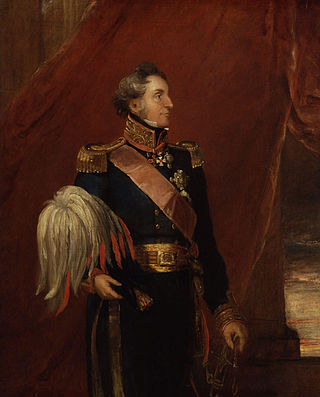
Lieutenant General Richard Hussey Vivian, 1st Baron Vivian, known as Sir Hussey Vivian from 1815 to 1828 and Sir Hussey Vivian, Bt, from 1828 to 1841, was a British cavalry leader from the Vivian family.
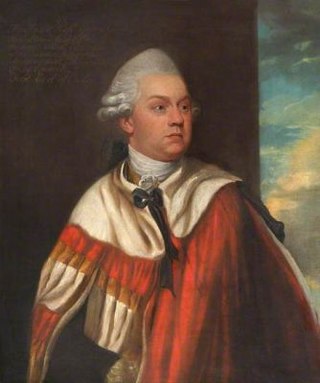
George Onslow, 1st Earl of Onslow PC, known as Lord Onslow from 1776 until 1801, was a British peer and politician.
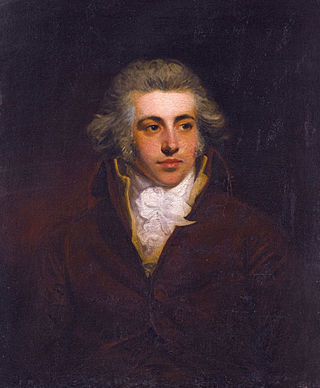
Lord Henry FitzGerald PC (Ire) was the fourth son of the 1st Duke of Leinster and the Duchess of Leinster. A younger brother was the revolutionary Lord Edward FitzGerald.
This is a list of High Sheriffs of Lincolnshire.
There have been two baronetcies created for persons with the surname Sullivan, both in the Baronetage of the United Kingdom. One creation is extant as of 2010.
Thomas Onslow, 2nd Earl of Onslow was an English nobleman and courtier who succeeded to his title in 1814. Originally the Honourable Tom Onslow, he was styled Viscount Cranley from 1801 to 1814. He died in 1827 at his seat, Clandon Park in Surrey.
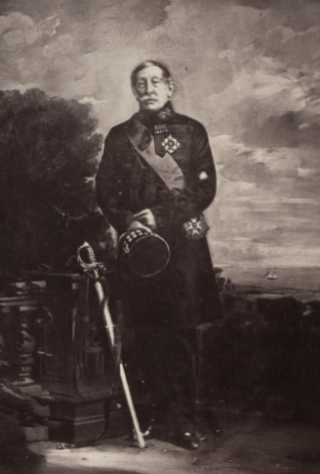
Field Marshal Sir Alexander George Woodford, GCB, KCMG, was a British Army officer. After taking part in the Anglo-Russian invasion of Holland, he served in most of the battles of the Napoleonic Wars. During the Hundred Days he commanded the 2nd battalion of the Coldstream Guards at the Battle of Quatre Bras, the Battle of Waterloo and the storming of Cambrai. He went on to become lieutenant governor and brigade commander at Malta, lieutenant governor and brigade commander at Corfu and then commander of the British garrison on the Ionian Islands before being appointed Governor and Commander-in-Chief of Gibraltar.

The Honourable Henry Grey Bennet FRS was a British politician.
Sir Richard Joseph Sullivan, 1st Baronet was a British MP and writer.
Sir Robert Heron, 2nd Baronet was a British Whig politician. He sat in the House of Commons from 1812 to 1847, with a break in 1818–1819.
John Bacon (1777–1859), also known as John Bacon the Younger, or Junior, to distinguish him from his equally famous father, was an English sculptor.
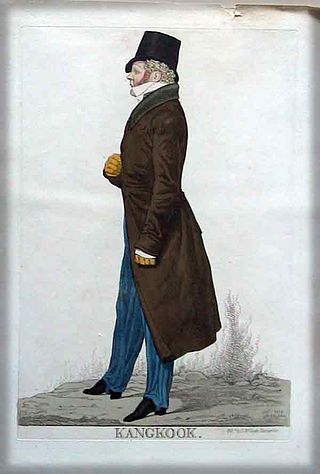
Major-General Sir Henry Frederick Cooke ('Kangkook') CB, KCH, was a British soldier and Tory politician.
Lieutenant-General Sir Henry Bayly was a British Army officer who became Lieutenant Governor of Guernsey. He was colonel of the 8th Regiment of Foot.

Sir Frederick Fletcher-Vane, 2nd Baronet, was a British politician, landowner and aristocrat. He was MP for the pocket borough of Winchelsea, between 1792 and 1794, the borough of Carlisle, between 1796 and 1802, and again for Winchelsea, between 1806 and 1807. Sir Frederick was the 2nd Baronet of Hutton and a descendant of Sir Henry Vane the Elder. In 1788 he served as High Sheriff of Cumberland.













